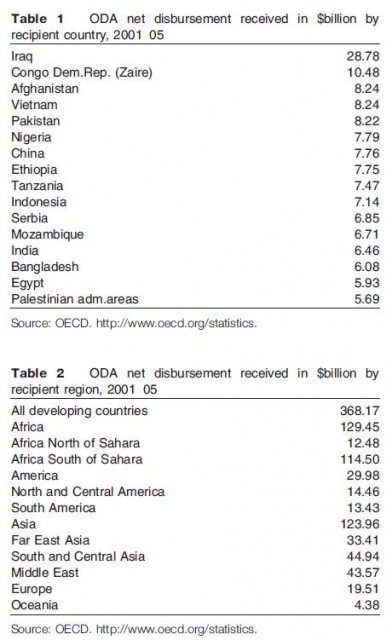Reasons for Giving Aid
The main objective of giving aid, since decolonization, is to eradicate poverty from developing countries. Although over the last 50 years other objectives have also emerged which influence donors. For example, around two thirds of Britain's aid has gone to Commonwealth countries to maintain close historical relationships. A has also been given to secure economic and political interests such as cheap labor, expansion of markets, and natural resources. During the Cold War, aid was motivated by political ideology with capitalist governments providing aid to stem the spread of communism.

Over the years, the main motivation of US aid has been national security and superpower rivalry; this led to geopolitical allocations, while Germany and Japan have had very economic objectives. The support for aid is declining within the US. Post 9/11, reflecting on the origins of international terrorism has provided new objectives to giving aid. The post Cold War disorders such as violent conflicts have seen the reemergence of new kinds of security threats, while countries like Canada, the Netherlands, and Scandinavia attach great importance to the objective of international humanity.
- Different Types of Aid
- Aid
- Contested Models of Agri-Environmental Governance
- Toward Greener Farm Policies?
- Developing an Environmentalist Critique of Modern Agriculture
- Agri-Environmentalism and Rural Change
- Conclusions: Prospects and Challenges for Sustainable Agricultural and Rural Development
- Some Conceptual Building Blocks for the Sustainable Rural Development Paradigm
- The Sustainable Rural Development Paradigm in Europe